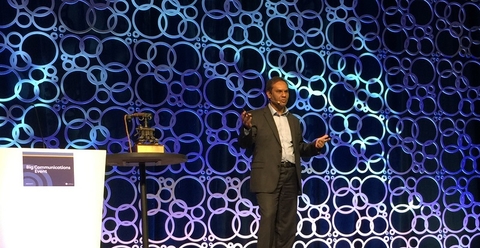HUNTSVILLE, Ala.—As CenturyLink virtualizes more of its network with software, the service provider faces not only a technology challenge, but also a people challenge in that its employees need to gain different experience.
Being a more than 100-year-old telco that began its life selling plain old telephone services (POTS), the service provider has a litany of legacy network infrastructure and services it still has to maintain and an employee base that will have to be retrained in the new environment.
RELATED: CenturyLink's Hussain: SD-WAN is complementing MPLS, driving hybrid networks
Aamir Hussain, CTO of CenturyLink, told attendees at the Adtran Connect event that the training process and the way services will be provisioned are part of the virtual transition.

“Technology transformation is only one part of the equation,” Hussain said. “When you are talking about transforming the customer experience and transforming their network, this requires a cultural transformation.”
Unlike the traditional methods of creating and delivering services, which in some cases could take up to a year or more, the advent of virtualization enables large telcos like CenturyLink to cut that development time down to a few days.
“Gone are the days when you would design a service, write the requirements, do proof of concepts, do an FOA and take 2-3 years to do it,” Hussain said. “Every 3 to 6 months, customers are asking for something new.”
Hybrid network evolution
CenturyLink continues to drive virtualization across its network, but the near-term reality in transforming its network is that it will continue to operate in a hybrid environment that will consist of a mix of older legacy hardware and newer software.
Over the past 15 years, CenturyLink has invested more than $65 billion in its network, and it continues to invest between $3 billion and $4 billion a year to ensure customer satisfaction.
“These investments are just to make sure that we bring customers the services they expect,” Hussain said. “When we move to a programmable network, it’s about having the right platforms with the right programs, software defined networking, and controlling that through our orchestration engine that allows us to manage the customer’s workloads and applications.”
The service provider also continues to make progress on the virtualization front.
By the end of last year, CenturyLink itself has enabled 60% of its network on software, and it continues to ramp up its product set with these capabilities. The company set a goal to have 100% of its POPs virtualized by the end of 2019.
“These are mega POPs and 60% of them have this,” Hussain said, adding that “54% of our services are actually software-driven.”
By implementing more software in its network, CenturyLink can shorten service provisioning and activation times for a business customer. Unlike ordering a TDM-based T-1 circuit, which could take up to 3 months, CenturyLink can now allow a customer to order an Ethernet circuit from a portal and have it up and running in a matter of days.
“With legacy services, you had to do a truck roll, a site survey and it takes 60-90 days to get that service up and running,” Hussain said. “If you already have fiber available in a building and you don’t have to do construction, you could get that service up in 1 hour."
Hussain said that “this is what customers are looking for because they want agility.”
Balancing legacy losses, next-gen growth
While CenturyLink has set a good path for virtualization and next-gen broadband, the reality is that the telco still has a large legacy base of TDM services that continue to shrink.
This is driven by two main factors: customer churn to competitors and the migration to lower priced services like Ethernet.
“When you’re in my position where you have to figure out your own business to stay relevant over the next few years, you have to balance that need for usurpation with innovation,” Hussain said. “We have a large legacy business and that business is going to decline over time and that’s been happening to us over the past 4-5 years.”
Similar to its direct peers AT&T and Verizon, the challenge for CenturyLink is being able to make up the legacy losses with revenue gains from new services like cloud and Ethernet.
Because the margins of the strategic business services are 2.5 times less than the legacy business, if CenturyLink loses a dollar of revenue it has to gain $3 of revenue on the other side to have the same margin.
This was certainly on display in the telco’s second-quarter earnings results. Enterprise segment revenues were $2.22 billion, down 9% from second quarter 2016, primarily due to the revenue reduction associated with the colocation sale, as well as the decline in legacy revenues.
“As our legacy business declines, we have to make sure that we’re growing the strategic business—Ethernet, MPLS, and high speed broadband—at a faster rate because the strategic business is not as mature as some of the legacy business we have,” Hussain said. “That’s not easy to solve.”
So what is CenturyLink doing to solve this?
Hussain said that the telco has “two main challenges: Get as much speed out there as possible and transform our network to a software-defined virtual experience that really provides digitization for our customer base.”
